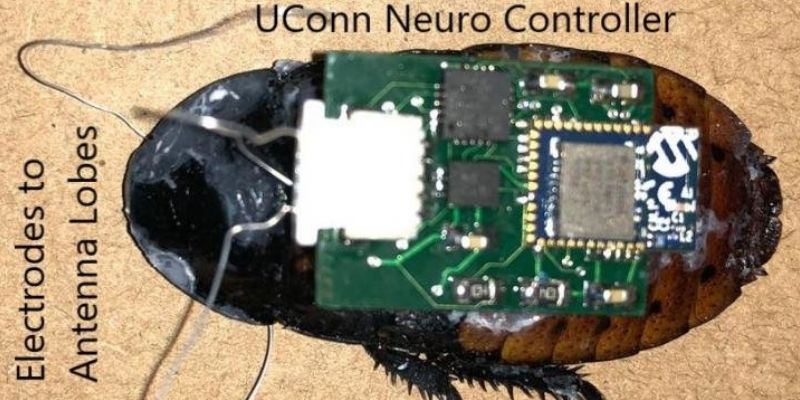Indian origin scientist develops cyborg cockroach that can find people under debris
In future, don't be surprised if you come across news about people trapped under collapsed buildings being rescued by a cockroach.
Based on the concept of biorobotics, Indian origin scientist Abhishek Dutta, an assistant professor at the University of Connecticut, US, has joined hands with other researchers at the university and has developed a robot-cockroach hybrid, which is on the lines of cybernetic beings or Cyborgs.
Abhishek is a professor of electrical and computer engineering and is specialised in control system optimisation and cyber-physical systems.

Abishek, along with Evan Faulkner, an undergraduate student, will be publishing a paper, which is based on the cyborg cockroach capable of being controlled via Bluetooth, says The Better India.
The research prototype is a Madagascar hissing cockroach. The team has mounted a backpack, consisting of a microcircuit, on the cockroach. The microcircuit is designed in such a way that it enables it to control the insect through its antenna.
The insect can be manipulated by sending an electrical signal in either the insect's left or right antenna lobe's neural tissue. The signal can make the insect move in any direction, reports Indiatoday.
Speaking to UConn Today, the university paper, Abhishek says,
The use of insects as platforms for small robots has an incredible number of useful applications - from search and rescue to national defence.
His assistant Evan Faulkner added,
We believe our microcircuit provides a more sophisticated and reliable control system that brings us one step closer to the real-world implementation of this technology.
The backpack incorporates a nine-axis inertial measurement unit, which tracks the insect's linear and rotational acceleration, identifies its compass heading and detects the ambient temperature surrounding the insect.
The information gathered through the insect's movement is sent through a tiny Bluetooth antenna on the device to the operator. The signal can also be detected by an ordinary cellphone.
Do you have an interesting story to share? Please write to us at [email protected]. To stay updated with more positive news, please connect with us on Facebook and Twitter









![[Startup Bharat] How Malabar Angel Network is boosting North Kerala’s startup ecosystem](https://images.yourstory.com/cs/2/79900dd0d91311e8a16045a90309d734/MANBuilding1574227798889jpg)

